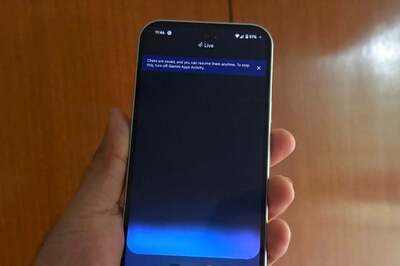
views
CHENNAI: Two-and-a-half decades ago, owning a TVS-50 moped was the sign of a successful working man. Lean, utilitarian and much more expensive than its non-motorized cousin - the cycle, the vehicle became the object of desire of an entire generation; everyone from starchy-shirted bank employee to college student in bell-bottomed pants wanted to get their hands on one. But till they did, they would have to watch those riding past on Chennai’s roads from the green and red Pallavan Transport Corporation buses that were the city’s chief mode of transport then. Cut to 2011, neither are visible in Singaara Chennai’s cityscape as PTC has given way to Metropolitan Transport Corporation and the mopeds have become old fashioned. But commuting is no more a pleasurable experience and is indeed a nightmare thanks to the sudden explosion of vehicles on the city roads.While it is easily evident that the number of private vehicles has grown in leaps and bounds in the last half-decade, it is noteworthy that the number of two-wheelers in Chennai has grown 24-fold in the period between 1984 and 2008, as mentioned in the Comprehensive Transportation Study made in the Chennai Metropolitan Area. While it is estimated that approximately 9.7 per cent vehicles are added to the city’s roads every year, the final vehicle toll in 2010-11 as provided by the State Transport Department to be 33,74,565 is certainly staggering (Transport and Non-transport). When compared with 3 million vehicles registered in October 2007, this rise is alarmingly large. It can be argued that people have taken to purchasing vehicles because of increased salaries, a plethora of vehicular options and ‘any-time-service’ that comes with owning your own vehicle, but the question does arise: Is the boom in private vehicular population a direct consequence of an inadequate public transport system? According to a study conducted by the Ministry of Urban Development, Chennai had one of the lowest (modal share of trip) rates in public transport (31%) as opposed to other metros such as Mumbai (45%), Kolkata (54%) and Delhi (43%). “It’s a matter of simple convenience,” says Raj Cherubal, who works with Chennai City Connect, an NGO that works with urban authorities. “If people have the option of fail-proof travel at a subsidized rate, why would they not take it?”Surprisingly, despite a steep upward spiral in vehicle and fuel prices, plenty of people have switched to two-wheelers from public transport over the past five years. This spike has been seen primarily in the two-wheeler segment in Chennai, with 25,81,534 bikes, mopeds and scooters currently running in the city. Coupled with the fact that the two wheelers in Chennai constitute 77% of the vehicles, the second highest margin in the country, it is no surprise that petrol price hikes draw such an ire. “It is painful to shell out hundreds a week for fuel, when deluxe bus tickets still cost Rs. 14, but the sheer hassle of getting to and from the bus stand is enough to make the price difference worth it,” says Malavika Anand, a translator with an IT major, who travels by bike from Anna Nagar to OMR. With the Chennai Metro Rail project well underway, it does not bode well only for two-wheeler riders but more specifically for car-users. “Though bikes outnumber cars anywhere in India, it’s the increase in car numbers that has greatly led to traffic woes,” explains a senior Traffic Police official. “More people like to travel in a/c modes and the buses are all overflowing. Perhaps Metro can decrease the car traffic,” he says. With petrol price hovering above Rs. 70 per litre, road users are in a quandary - will convenience or economy prevail?



















Comments
0 comment